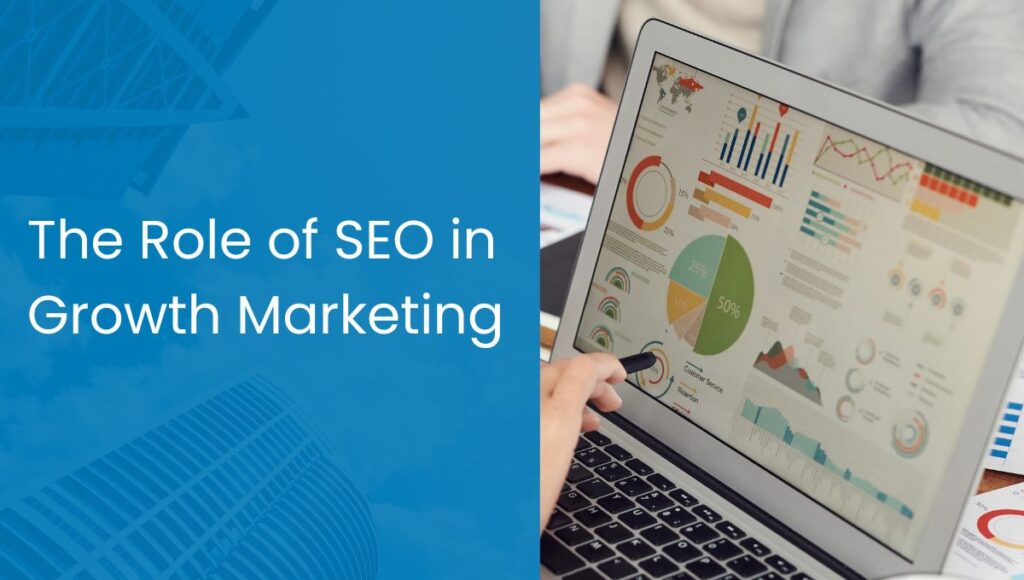Search engine optimization (SEO) is an essential part of any growth marketing strategy. SEO helps your website rank higher in search engine results pages (SERPs), which can drive traffic, increase brand visibility, and boost revenue. In this article, we’ll discuss the role of SEO in growth marketing and how you can use it to drive growth for your business.
What is Growth Marketing?
Growth marketing is a data-driven approach to marketing that focuses on driving growth and revenue for a business. Unlike traditional marketing, which focuses on brand awareness and lead generation, growth marketing uses a variety of tactics to acquire and retain customers. These tactics can include email marketing, social media marketing, content marketing, paid advertising, and SEO.
The Role of SEO in Growth Marketing
SEO plays a critical role in growth marketing by helping businesses rank higher in search engine results pages. When your website ranks higher in search results, it’s more likely that potential customers will find your site, click through to it, and convert into paying customers. Here are some of the ways that SEO can contribute to growth marketing:
Driving Traffic: SEO helps to drive traffic to your website by improving your website’s visibility in search results. By optimizing your website’s content and structure for search engines, you can attract more visitors to your site and increase the chances of converting them into customers.
Building Brand Visibility: Ranking high in search engine results can increase your brand’s visibility and authority in your industry. This can help to establish your brand as a thought leader and industry expert, which can build trust and credibility with potential customers.
Improving Conversion Rates: SEO can also help to improve your website’s conversion rates by optimizing your website’s user experience, content, and design. By providing users with a better experience and relevant content, you can increase the likelihood of them converting into paying customers.
Long-Term Value: Unlike paid advertising, which provides short-term results, SEO provides long-term value by helping your website rank higher in search results over time. By continually optimizing your website for search engines, you can maintain and improve your rankings, which can drive growth for your business for years to come.
How to Use SEO for Growth Marketing
To use SEO for growth marketing, you need to develop a comprehensive SEO strategy that aligns with your business goals and target audience. Here are some steps you can take to develop an effective SEO strategy for growth marketing:
Keyword Research: Start by conducting keyword research to identify the keywords and phrases that your target audience is using to find businesses like yours. Use tools like Google Keyword Planner, SEMrush, and Ahrefs to identify high-volume and low-competition keywords that you can target in your content.
On-Page Optimization: Once you’ve identified your target keywords, optimize your website’s content and structure to improve its visibility in search results. This includes optimizing your meta tags, headlines, and body content for your target keywords, as well as improving your website’s load speed, mobile-friendliness, and site structure.
Content Creation: Develop a content marketing strategy that focuses on creating high-quality, relevant content for your target audience. This can include blog posts, videos, infographics, and other types of content that help to educate and engage your audience.
Link Building: Build high-quality backlinks to your website from other authoritative websites in your industry. This can help to improve your website’s domain authority and search rankings, which can drive more traffic and conversions.
Analytics and Reporting: Monitor your website’s performance in search results using tools like Google Analytics and Google Search Console. Use this data to identify
Key Statistics Highlighting the Importance of SEO for Business Growth
According to a study by HubSpot, businesses that publish 16 or more blog posts per month get 4.5 times more leads than those that publish 0-4 posts per month.
A study by BrightEdge found that organic search drives 53.3% of website traffic, while paid search drives 15%.
According to Google, 50% of consumers who perform a local search on their smartphone visit a store within a day, and 18% of those searches result in a purchase.
A study by Search Engine Journal found that the first position in Google search results receives 33% of the clicks, while the second position receives 15% and the third position receives 9%.
According to a study by Backlinko, the average length of content for pages ranking on the first page of Google is 1,890 words.
A study by Moz found that websites with a higher number of backlinks tend to rank higher in search results.
According to Google, the use of mobile devices for search has increased by 500% over the past few years, and mobile searches are now more common than desktop searches.
A study by BrightEdge found that the click-through rate (CTR) for pages ranking in the first position of Google search results is 31.7%, while the CTR for pages ranking in the tenth position is only 2.4%.
These stats and facts demonstrate the importance of SEO in driving growth for businesses. By focusing on optimizing your website’s content and structure for search engines, you can increase your visibility in search results, drive more traffic to your site, and ultimately boost revenue and growth for your business.
Naveen Sharma specializes in SEO and organic growth marketing. He has extensive experience working with startups and established companies. As an SEO expert, he has helped businesses increase organic traffic and conversions.

